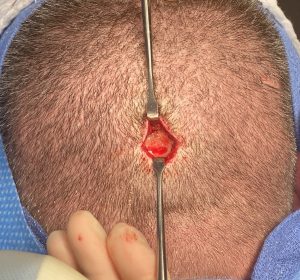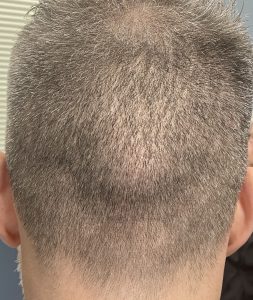Background: The occipital bone on the back of the head has a trapezoidal shape that forms the lower and back part of the cranium. It is not a snoot bone and has various ridges and prominences due to the attachment of numerous neck muscles. But there is one often seen and well described bump on the back of the head called the occipital knob or by anatomical terms the inion. This is the tip of the external midline occipital protuberance onto which the ligamentous nuchal and fibers of the trapezius muscle attach.
Most people have an occipital inion although its size is generally bigger in men than women. Having looked at thousands of 3D skull scans for head reshaping surgery I have noticed that all men have an inion, some larger than others, but many women have no evidence of it at all. Presumably the presence is either a genetic origin, created during development by the pull of the neck muscles or both.
While many inions are invisible due to their smaller size and the coverage of a thick scalp, some will enlarge and become visible. While a few enlarged inions are symptomatic in terms of discomfort most are of an aesthetic concern particularly if the patient has short hair. In such cases surgical reduction is the definitive treatment to recontour the prominence to a flatter profile. This can be done using a very small scalp incision and is completely safe as their is no risk of intracranial penetration.
Case Study: This male with short hair was bothered by the central bony prominence on the back of his head. He had no discomfort from it and his concerns were purely aesthetic.
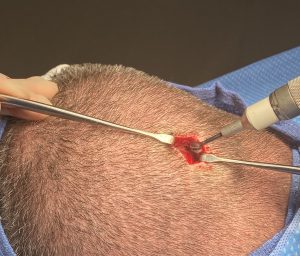
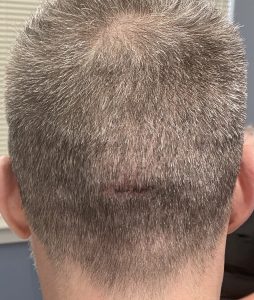
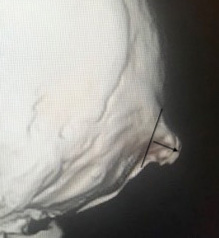
Highlights:
- The occipital is one of the more common aesthetic skull prominences and can always be completely reduced.
- The occipital knob prominence appears like a point but has much wider bony base to it than it appears.,
- A minimal overlying scalp incision is all that is needed to achieve an adequate reduction.
Dr. Barry Eppley
World-Renowned Plastic Surgeon



